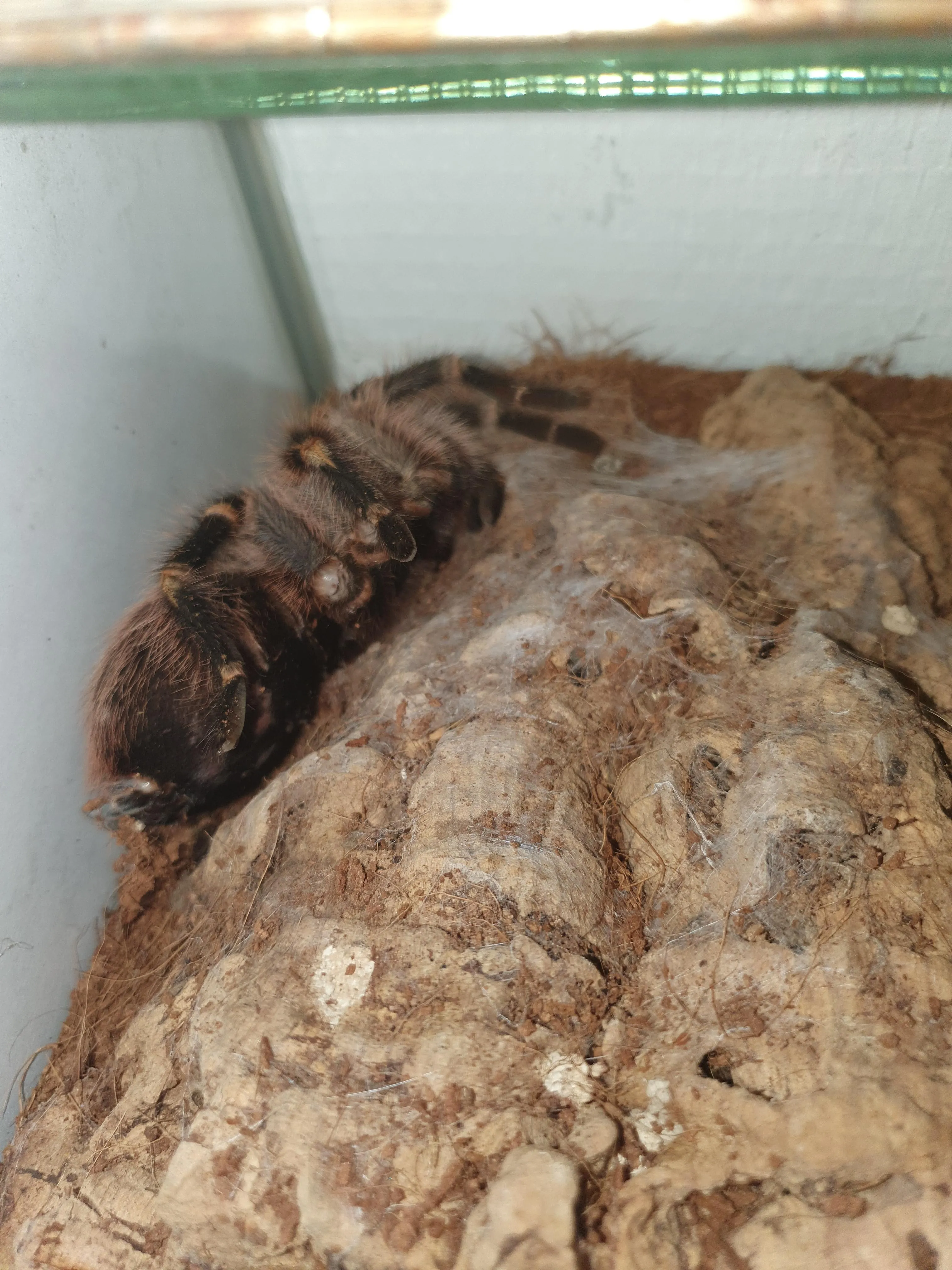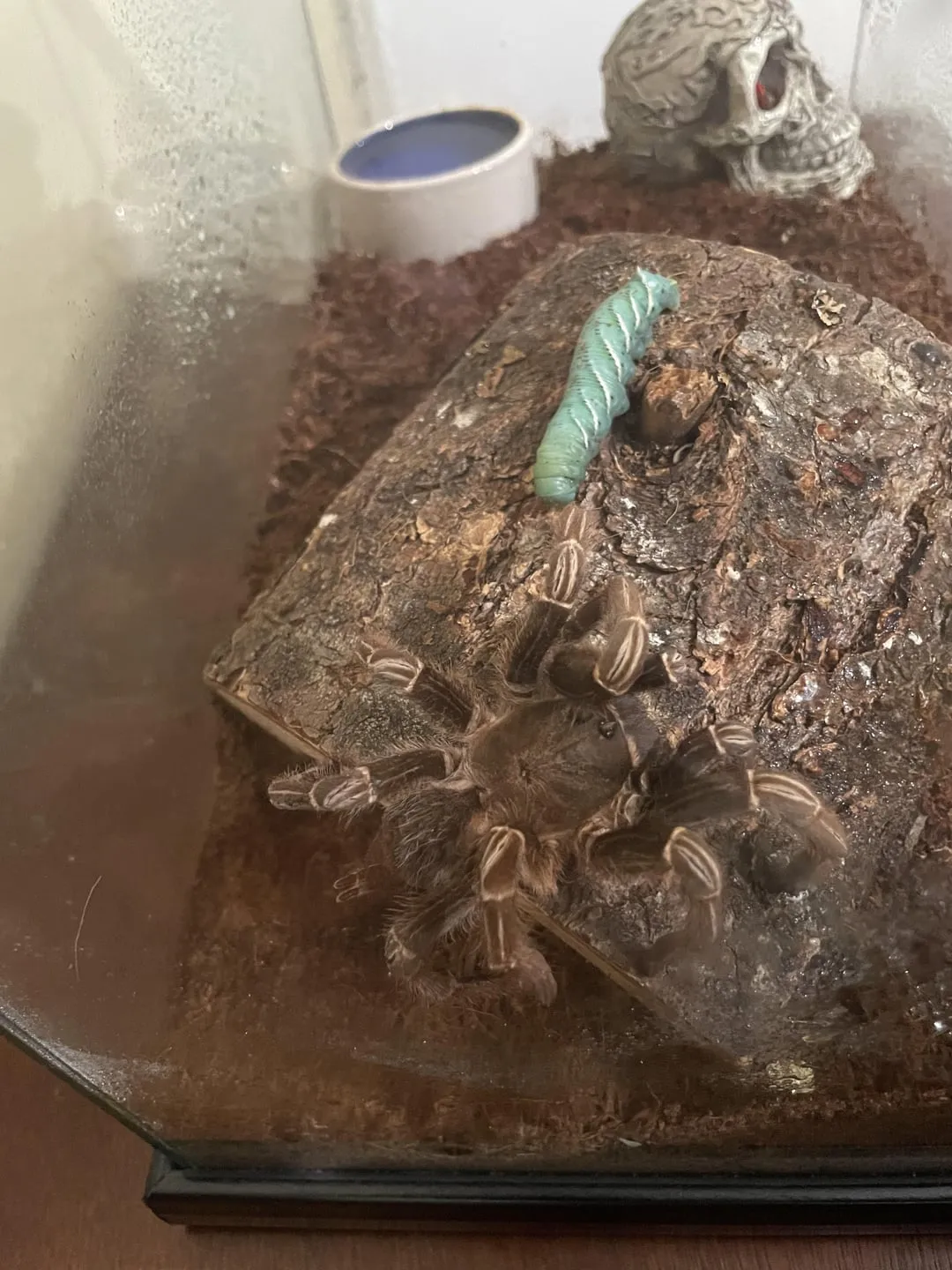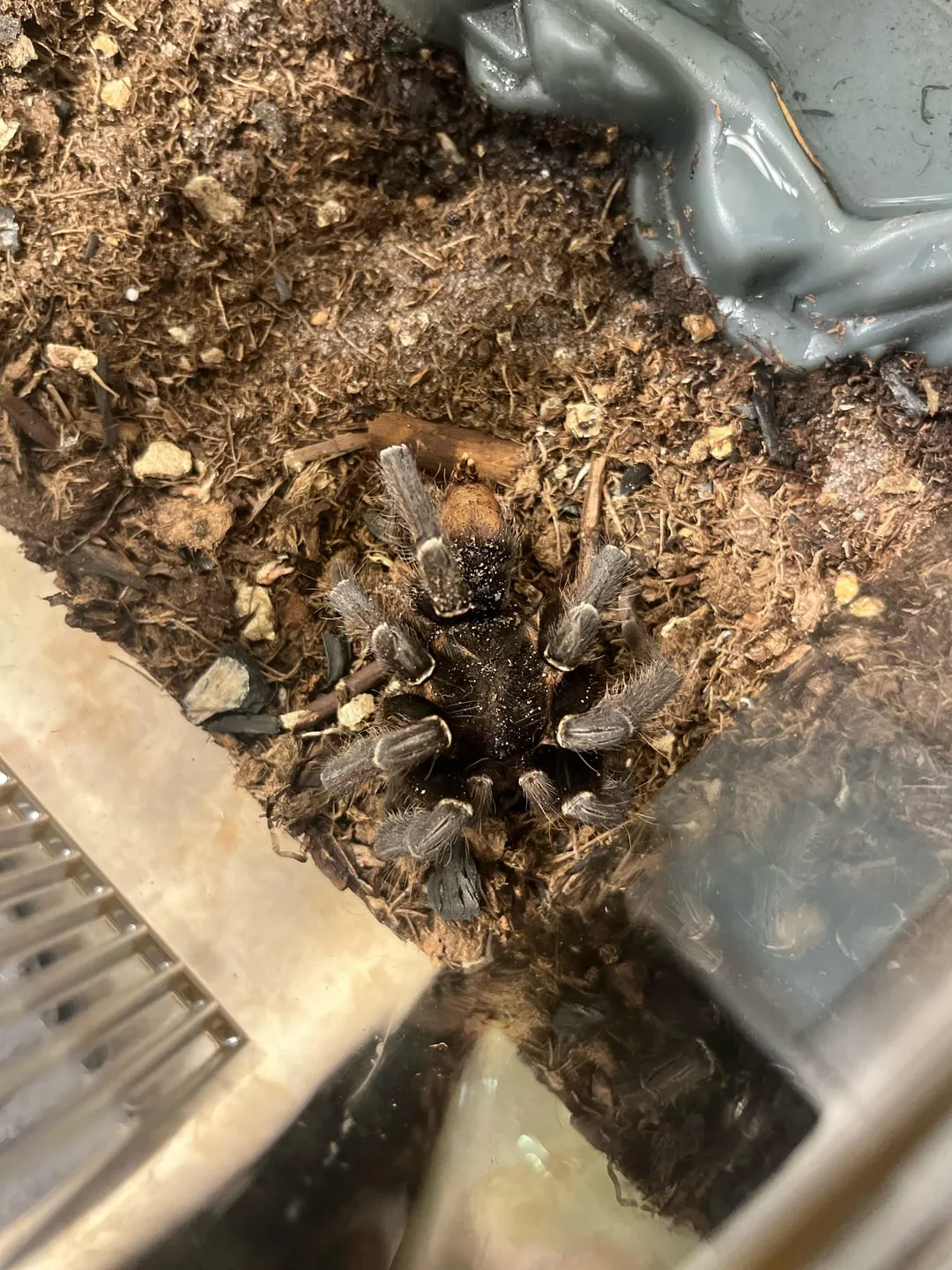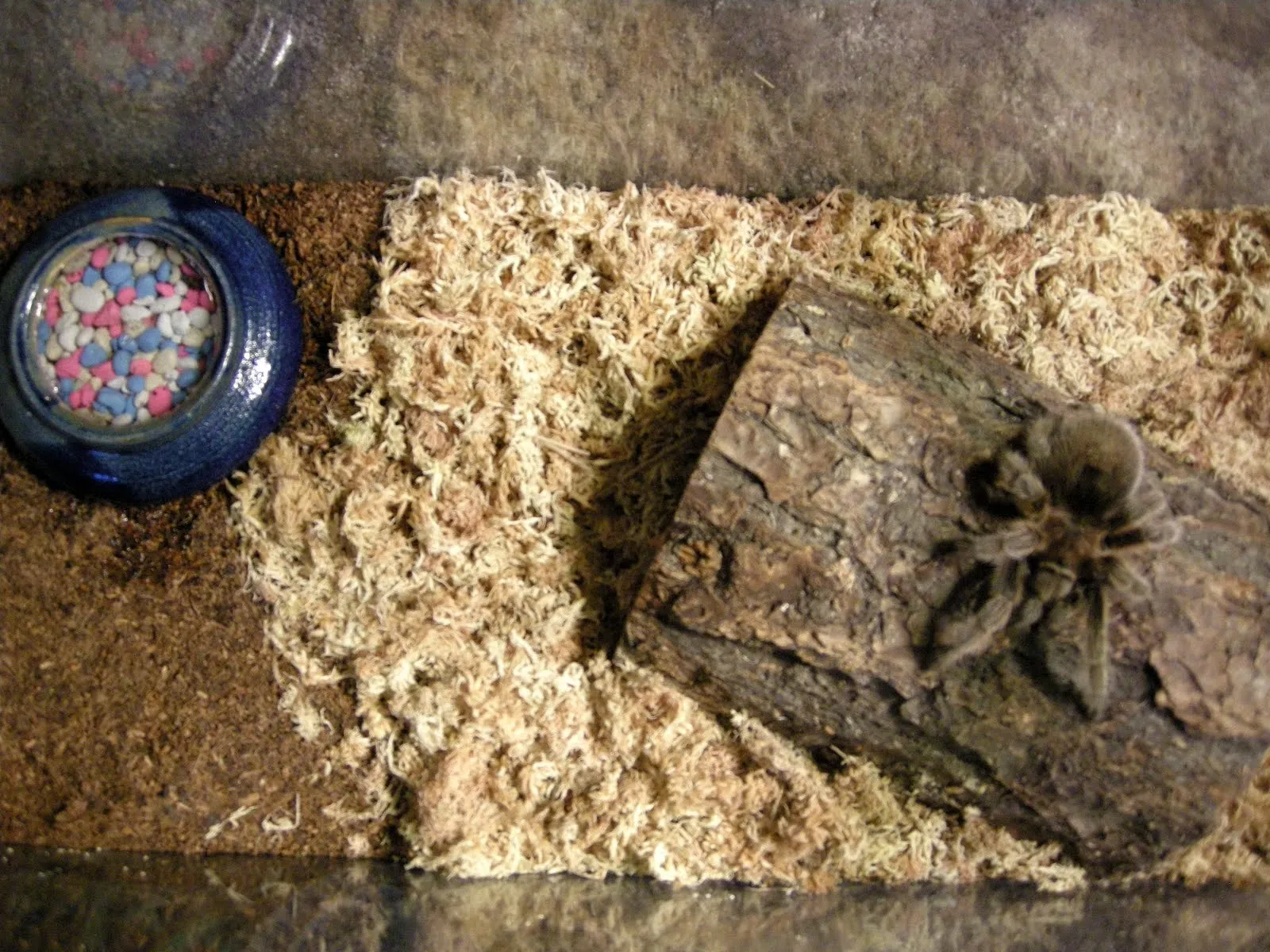Owning a tarantula can be a rewarding experience, but it also comes with responsibilities. One of the most important aspects of tarantula care is knowing how to recognize and respond to signs of illness. If you suspect your tarantula is dying, prompt action is crucial. This guide provides essential information on identifying distress, addressing common issues, and, ultimately, increasing your pet’s chances of survival. Remember, while some situations can be managed at home, others require professional veterinary intervention. Learning how to save a dying tarantula involves a combination of observation, proactive care, and knowing when to seek expert help. Proper care can help them live for many years to come, and recognizing issues can help solve them.
Recognizing Signs of a Dying Tarantula
The first step in saving a dying tarantula is accurately identifying the problem. Knowing the early indicators of distress can make the difference between life and death. Tarantulas, like all living creatures, exhibit specific behaviors and physical conditions when they are unwell. Observing your tarantula regularly is key. Subtle changes in behavior or appearance can provide vital clues. By being attentive and proactive, you can catch problems early and increase the likelihood of a positive outcome. Some signs of illness might seem small, but are important to notice. Keep in mind, the faster you recognize something wrong, the better. Some issues might seem small but can have very severe consequences.
Lethargy and Weakness
One of the most common signs that a tarantula is in trouble is a significant decrease in activity levels. A healthy tarantula is usually active, especially at night. It will explore its enclosure, ambush prey, and generally behave in a lively manner. A lethargic tarantula, on the other hand, will spend most of its time motionless. It might be sluggish when moving, with a noticeable lack of energy. If your tarantula is not moving much, it could be a sign it is sick. This reduced activity can be an indication of several underlying issues, including dehydration, illness, or environmental stress. Carefully observe your pet for this behavior, and take appropriate action if it persists.
Loss of Appetite

A healthy tarantula has a good appetite, especially for appropriately sized insects. If your tarantula suddenly stops eating, or shows a marked decrease in its willingness to feed, it’s a cause for concern. Observe the food items you provide. Are they being ignored? If the tarantula does approach prey, does it make an attempt to capture it? A loss of appetite can stem from various causes, including stress, environmental factors, or underlying illness. Check to make sure the food you offer is still good. Ensure that it is something they enjoy, and the right size. The length of time a tarantula goes without eating can provide insights into its condition. If the tarantula refuses food for an extended period, further investigation is warranted.
Unusual Posture or Movement
Healthy tarantulas typically move with purpose and grace. They maintain a normal posture, with their legs extended and body held off the ground. Unusual postures or movements can be a sign of serious problems. Look out for behaviors like twitching, tremors, or uncoordinated movements. The tarantula might struggle to stand upright, or its legs may appear weak or stiff. Other signs might include curling of the legs or the abdomen, or an inability to move them normally. These symptoms could indicate a neurological problem, injury, or other serious health issues. Pay attention to the spider’s posture while moving as well. If you recognize any unusual behaviors, it’s essential to investigate further.
Environmental Factors to Check
The environment your tarantula lives in plays a crucial role in its health and well-being. Many problems can be caused by improper environmental conditions. Maintaining the correct temperature, humidity, and hygiene within the enclosure is paramount. Problems can stem from the environment that makes it difficult for your tarantula to thrive. If these conditions are not optimal, your tarantula can become stressed, leading to illness. Regularly assessing and adjusting these environmental factors is a key part of providing proper tarantula care. Always make sure the home you provide can help your tarantula thrive.
Temperature and Humidity

Tarantulas are ectothermic, meaning they rely on their environment to regulate their body temperature. Providing the correct temperature range is vital for their health and metabolism. Different species have different needs, so research the specific temperature requirements for your tarantula. Generally, a temperature between 75-85°F (24-29°C) is appropriate for most common species. Humidity levels are equally important. Proper humidity supports respiration and molting. Measure both temperature and humidity using a reliable thermometer and hygrometer. Make sure the tarantula’s tank is not too cold, or too hot. Most tarantulas need a good humidity level to thrive, so make sure this is maintained.
Substrate and Enclosure Hygiene
The substrate, or bedding, in your tarantula’s enclosure should be appropriate for the species and regularly maintained. Substrate serves several purposes, including providing a comfortable environment, maintaining humidity, and allowing the tarantula to burrow. The substrate should be replaced regularly to prevent the buildup of waste and bacteria. Use a substrate that supports the correct humidity level and isn’t harmful to the spider. The enclosure itself should be cleaned frequently, removing any uneaten food, molted exoskeletons, and other debris. The cleanliness of the enclosure directly impacts the health of your tarantula. Poor enclosure hygiene can lead to fungal infections and other illnesses. Make sure you keep the enclosure clean to keep your tarantula healthy.
Provide Fresh Water and Food
Ensure your tarantula has access to a fresh water source at all times. A shallow water dish is typically sufficient, but it needs to be kept clean. Refresh the water regularly to prevent contamination. Make sure it is a safe water source, such as bottled water. Similarly, provide a balanced diet of appropriately sized insects. Remove any uneaten food within 24 hours to prevent the growth of mold or bacteria. Proper nutrition is critical for your tarantula’s health and strength. Make sure the food is a good source of nutrients. Also, make sure you do not overfeed them. A regular feeding schedule, along with fresh water, can have a major effect on the tarantula’s health.
Dehydration and Hydration

Dehydration is a common problem in pet tarantulas, and it can quickly lead to serious health complications. Tarantulas require a consistent water supply. If your tarantula shows signs of dehydration, such as a shrunken abdomen or lethargy, immediate action is needed. Providing proper hydration can often reverse the effects of dehydration. Recognizing the signs and knowing the proper methods of rehydration can be essential to saving a dying tarantula. It is crucial to act quickly if you think your tarantula is dehydrated. Take the time to learn the best way to keep your tarantula hydrated.
How to Hydrate Your Tarantula
If you suspect your tarantula is dehydrated, provide a reliable water source immediately. Ensure the water dish is shallow so that the tarantula can easily access it. Gently mist the enclosure with water, but avoid oversaturating the substrate. You can also offer water droplets directly to the tarantula. Use a small dropper or cotton swab to gently place water near its mouthparts. Do not force the water into the tarantula’s mouth. Instead, wait for it to drink at its own pace. Observe the tarantula’s behavior and response to hydration efforts. If the dehydration is severe, repeat these steps every few hours until the tarantula recovers. Make sure the water source is safe and clean for your tarantula.
Monitor Water Dish and Misting
Regularly check the water dish to make sure it is clean and filled with fresh water. The water should be at a level that the tarantula can reach easily. Use a reliable hygrometer to monitor the humidity levels in the enclosure. Misting the enclosure helps maintain humidity, but should be done with care to avoid oversaturating the substrate. Overly wet conditions can lead to fungal infections. Observe your tarantula’s behavior after misting. If it seems stressed or is avoiding the wet areas, adjust your misting schedule accordingly. Make sure you are providing the right amount of humidity for your tarantula’s species. Monitoring the water and misting the enclosure can make a difference to a dehydrated tarantula.
Feeding Strategies

Nutrition is fundamental to the health of any tarantula. The type of food you give them, how often you give it, and how much you give it can have a huge effect. A well-fed tarantula is more likely to thrive and withstand illness. Understanding their specific dietary needs and implementing the correct feeding strategies is very important. When addressing the health of a dying tarantula, proper feeding plays a crucial role in helping them recover. Make sure you know what is the best diet for your tarantula, and the amount of food they need. Following some simple guidelines can make a significant difference.
Suitable Prey Items
Tarantulas are primarily insectivores, meaning their diet consists mainly of insects. Crickets, mealworms, roaches, and other similar insects are all suitable prey. Ensure the insects are gut-loaded before feeding them to your tarantula. Gut-loading involves feeding the insects a nutritious diet before offering them to the tarantula. This increases the nutritional value of the prey. Select prey items that are appropriately sized for your tarantula. The size of the prey should generally be no larger than the tarantula’s body. Avoid feeding your tarantula wild-caught insects, as they may carry parasites or pesticides. Make sure the food you give them is healthy and clean to give them the right nutrients.
Feeding Frequency and Amount
The feeding frequency and amount depend on the tarantula’s age, species, and overall health. Younger tarantulas, or spiderlings, require more frequent feeding than adults. Typically, you can feed spiderlings every 2-3 days, while adults can be fed once or twice a week. Observe your tarantula’s body condition and adjust the feeding schedule as needed. A healthy tarantula will have a plump abdomen, while an underfed one will appear thin. Remove any uneaten prey within 24 hours. Overfeeding can lead to obesity, which is a health hazard. Always give your tarantula the right amount of food for its age, and keep a feeding schedule to stay organized.
Dealing With Molting Problems

Molting is a crucial process for tarantulas, as they shed their exoskeleton to grow. However, problems during molting can be life-threatening. Understanding the molting process and being prepared to assist your tarantula if needed is essential for their well-being. Make sure you know how to handle any molting problems before they happen. Recognize the signs of a problematic molt, and take the right steps to assist your tarantula. This knowledge can make a crucial difference in saving a dying tarantula. Molting is important for all tarantulas, so always be careful and prepared.
Assisting With Molting
During a normal molt, the tarantula will lie on its back, and the old exoskeleton will split open. Avoid disturbing the tarantula during this process. The spider is vulnerable during this time. However, in some cases, you may need to provide assistance. If the tarantula is struggling to molt, and the process has stalled, you may need to intervene carefully. Increase the humidity in the enclosure to help soften the exoskeleton. Use a small, soft brush to gently remove any stuck pieces. Never pull the tarantula out of its old exoskeleton. If you are not comfortable assisting with the molt, contact a veterinarian or experienced tarantula keeper for advice. Taking the proper steps to assist can help the spider molt properly, but is very important to be careful.
Recognizing Molting Issues
Some signs can indicate a problem during the molting process. Look out for a tarantula that has been trying to molt for an extended period, such as several days, without success. Difficulty splitting the old exoskeleton or getting stuck in the molt are also signs of issues. If the tarantula is unable to free itself, this is cause for concern. Other signs include an incomplete molt, where parts of the old exoskeleton remain attached, or signs of injury or bleeding. If you recognize these signs, assess the situation and consider taking action. Make sure you are prepared, and take the proper steps if there are any issues during the molting process.
When to Seek Veterinary Help

While you can handle many health issues at home, there are times when professional veterinary help is necessary. Knowing when to seek expert assistance can significantly improve the chances of your tarantula’s recovery. Not every situation can be solved at home. Recognizing the signs that require professional help is one of the most important aspects of tarantula ownership. Remember, prompt veterinary intervention can sometimes be the difference between life and death. If you see anything unusual, consider if a visit to a veterinarian is a good idea. Always take action if you think your tarantula needs help.
Signs of Serious Illness
Certain symptoms warrant immediate veterinary attention. These include significant injuries, such as a ruptured abdomen or damaged legs. Inability to move or stand up, or neurological problems, like tremors or paralysis, can also indicate a severe illness. Any sign of infection, such as discoloration or swelling, is another concern. If you are unsure about the cause of your tarantula’s distress, it’s always best to consult a professional. Even if you are unsure, a professional can provide the right steps to take. Remember, it is always better to be safe than sorry, so take the time to learn the signs of serious illness.
Finding a Specialist
Finding a veterinarian who specializes in exotic animals, particularly arachnids, is vital. Not all vets have experience with tarantulas. Start by searching online for exotic animal veterinarians in your area. Contact local exotic pet stores or tarantula clubs for recommendations. Prepare for your visit by gathering information about your tarantula’s care, including its species, age, and recent history. Be prepared to provide the vet with details about the symptoms you have observed, as well as any treatments you have already tried. A specialist can provide the correct treatment and advice for your tarantula. They will know the best way to give your pet the help it needs.
Saving a dying tarantula requires a combination of knowledge, observation, and prompt action. By recognizing the signs of distress, addressing environmental factors, and knowing when to seek professional help, you can significantly increase your pet’s chances of survival. Proper tarantula care is an ongoing process. It involves learning about their specific needs and adapting your care routine accordingly. Remember, proactive care, careful observation, and quick action can help keep your pet tarantula happy and healthy for years to come.
